Share
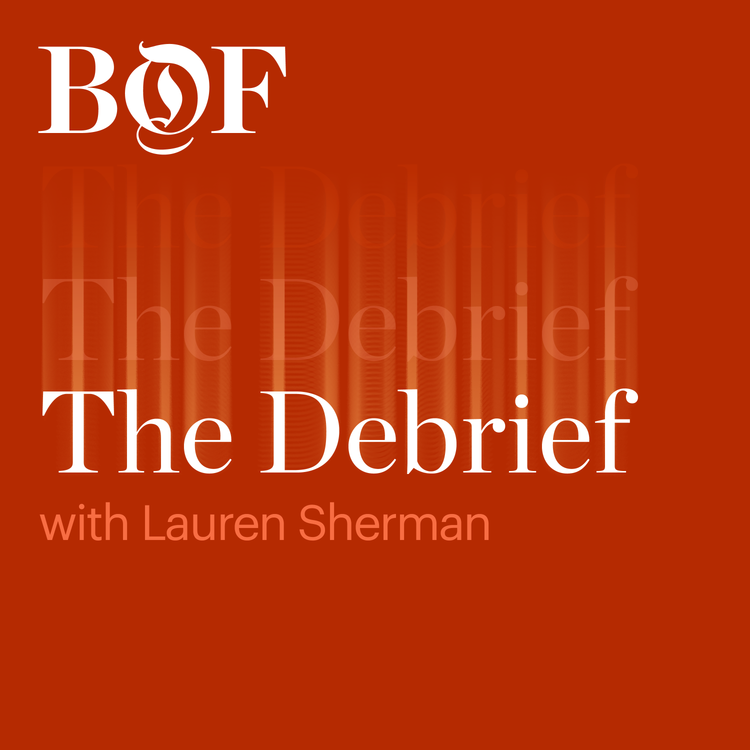
The Debrief
How Harry Styles Built a Nail Polish Empire
Priya Rao, executive editor, Business of Beauty, joins Lauren Sherman to unpack how the singer’s lifestyle label has managed to build a loyal fan base — without his direct involvement.
Background:
Harry Styles has managed to pull off a feat that has eluded countless celebrities, despite their many attempts: Building a popular beauty brand. He’s managed to do so even while taking a backseat when it comes to running Pleasing, his lifestyle line which predominantly sells nail polish as well as skin care and sweatshirts. Since launching in November 2022, Styles has not talked much about Pleasing publicly or on social media. But, the brand, created in partnership with his stylist Harry Lambert and creative director Molly Hawkins, has generated a plugged-in community of loyalists nonetheless.
“[Celebrities] are coming out with these really full lines that have nothing to do with what they’ve been about before. Pleasing really feels like Harry … like you’re getting a piece of Harry when you buy [products],” said Priya Rao, executive editor, Business of Beauty.
Key Insights:
- The Pleasing team, including stylist Harry Lambert and creative director Molly Hawkins, have distilled Styles’ aesthetic into a burgeoning brand — with fans who feel they’re buying a piece of the singer when they shop.
- Styles’ hands off approach has given the brand an interesting air of mystery, and his fanatical fans have helped build hype by visiting the brands’ maximalist pop-ups and collecting every colour of polish.
- Just because a celebrity or influencer has fans doesn’t mean their brand will be a hit — products have to be effective and messaging has to be on point for a label to have staying power.
Additional resources:
- Why Harry Styles Fans Can’t Get Enough of Pleasing
- Why Do We Root Against Celebrity Beauty Brands?
- The State of the Celebrity Beauty Brand
- Why Male Celebrities Are Launching Nail Lines
Join BoF Professional today with our exclusive podcast listener discount of 25% off an annual membership, follow the link here and enter the coupon code ‘debrief’ at checkout.
Want more from The Business of Fashion? Subscribe to our daily newsletter here.
Follow The Debrief wherever you listen to podcasts.
More episodes
View all episodes
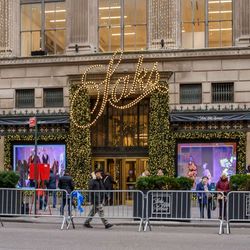
Saks’ Bankruptcy and the Future of Luxury Retail
22:21|Saks’ bankruptcy was widely expected, yet still felt like a shock to the fashion system. The department store giant’s Chapter 11 filing outlines $1.75 billion in restructuring finance and $3.4 billion owed to as many as 25,000 creditors – including $136 million to Chanel alone. Who will get paid, and what Saks looks like at the other end of the bankruptcy process, is an open question. Former Neiman Marcus chief Geoffroy van Raemdonck will lead the reset. As BoF’s retail editor Cat Chen puts it, Saks will need to “shrink in order to grow,” curb discounting, and rebuild trust through clienteling and service.Key Insights:Missed vendor payments undermined confidence in Saks Global soon after it acquired Neiman Marcus and Bergdorf Goodman. “Even after Saks created these new payment terms, they weren’t able to stick to their instalments,” Chen says. Labels “stopped shipping to Saks entirely,” creating “a death spiral where Saks wasn’t getting good inventory, and this hurt their ability to attract customers,” and sales slid further.When Saks Global acquired Neiman Marcus, both companies were extremely levered going in, with savings being swallowed by interest. The plan pitched $500 million in cost savings, but Saks Global took on more debt — $2.2 billion in bonds. As Chen explains, with margins in multi-brand retail already slim, “they were ill-fated because… a chunk of whatever sales or savings they were able to generate would be going toward interest payments.” As Saks has 10,000 to 25,000 creditors, owed $3.4 billion, bankruptcy court will approve a list of critical vendors that are essential to Saks’s business. While conglomerates will cope, “it's really the smaller independent brands that might be owed less money, but the amount that they're owed are just so much more critical to their business operations. These are the players that are the most vulnerable right now,” Chen warns — and it’s not just brands. A model shared she’s “owed $46,000...and can’t pay rent now.”Now, Saks must reset its business. Van Raemdonck “took Neiman Marcus in and out of bankruptcy,” yet Chen is blunt about the reality of the situation: “Saks Global will have to shrink in order to grow.” That means closing stores, stabilising cash flow and getting ruthless about discounting. From there, Chen says Saks has to compete on experience, delivering the best customer service and catering to their VICs. Additional Resources:Saks Global Files for Bankruptcy After Monthslong Hunt for Cash | BoF Chanel, Gucci and Capri Holdings: The Brands Topping Saks’ Creditor List | BoF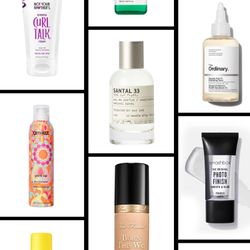
Inside Beauty’s 2026 M&A Pipeline
20:21|2026 opens with real movement in beauty deals. As first reported by The Business of Beauty, Estée Lauder is exploring a packaged sale of Too Faced, Smashbox and Dr. Jart to free up cash and refocus the portfolio. Who’s next? Colour fatigue is depressing makeup valuations, while fragrance, bodycare and haircare are drawing the most credible buyer interest, particularly from beauty conglomerates. Executive editor of The Business of Beauty, Priya Rao joins Brian Baskin and Sheena Butler-Young to unpack what this year of beauty deals has to offer. Key Insights:With Estée Lauder exploring a bundled sale of Too Faced, Smashbox and Dr. Jart, this portfolio reset signals a valuation reality check. The goal is to free up cash and refocus on culturally relevant, digital-native brands like The Ordinary and Le Labo. As Rao notes, “Deciem sells more skincare products than all of Estée Lauder’s other skincare brands combined,” and “Le Labo is also continuing to be on fire, even though Santal 33 has been around for 15 years.” Colour fatigue is depressing valuations in makeup. Over the past few years, artistry and colour brands have gone to market to find a buyer, but quickly found a landscape already flooded with similar offerings. “There were so many colour brands on the market. People were waiting for the next great one, so they weren’t willing to make a bet on any of these brands until the full slate was out,” says Rao. The result was some colour brands being left in the market, on and off, for over a year. She explains: “It’s kind of like buying a house – why am I going to buy this house at a premium when I could be buying at a discount?”Fragrance, meanwhile, remains a booming, high-margin lane. “All these other beauty businesses – hair care, body and fragrance – are more incremental to a strategic,” says Rao. While private equity is trying across the board, Rao advises that “if you want L’Oréal, LVMH or Estée Lauder, you have to be in categories that add incremental value, rather than ones they’re still trying to figure out.”Haircare offers the clearest near-term upside for acquirers. “Amika has the number one or number two dry shampoo at Sephora,” and its move into Ulta taps “a huge haircare business because of their back bar program”, says Rao. In mass hair care, Not Your Mother’s, which has had its longevity questioned in the past, shows durability and runway. Focused on styling and texture, Rao notes that it “hasn’t even played with shampoo and conditioner yet – in mass hair care, that’s where you play to make the big bucks.”Additional Resources:Exclusive: Estée Lauder Companies Has Put Three Brands Up for Sale | BoF Prestige Hair Care’s Shampoo Problem | BoF Why Fragrance Is the Latest Red Carpet Accessory | BoF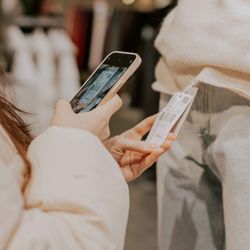
The Themes That Will Define the 2026 Fashion Agenda
25:23|BoF and McKinsey’s annual State of Fashion report finds the industry entering 2026 with caution: 46 percent of executives expect conditions to worsen, citing geopolitics, macro volatility and the risk of shoppers pulling back. Yet there is also a pulse of optimism around AI-driven efficiency, luxury’s creative recalibration and fresh consumer interest in categories from smart glasses to fine jewellery.Tariffs remain the dominant near-term swing factor. Brands mitigated pain in 2025 by pulling forward inventory, but as that cushion runs out, the full impact shows up in 2026 in costs and pricing. More broadly, luxury’s era of price-led growth has run its course; as BoF correspondent Marc Bain puts it, if you ask customers to pay more, you have to “actually offer the value for the price.”Key Insights:The mood has shifted from “uncertain” in 2025 to “challenging” in 2026. Companies feel better equipped but are bracing for a tougher year. “Uncertainty was ‘we don’t know what’s going to happen’. The challenge is, we know what is going to happen and it’s going to be tough,” says Bain.Tariffs will continue to bite in 2026, and price hikes will be part of the playbook. Brands used a mix of mitigation tactics in 2025, but many still expect to pass on costs. “The strategy that the highest number of executives said was their way of mitigating the tariff impact was raising prices,” Bain notes. “To some degree, there's just no way around that. You can do it strategically, but at some point you're probably going to have to raise prices.”Jewellery is the consumer bright spot for the year ahead, as the category has steadily outperformed thanks to steadier, more gradual price rises, exciting design and a strong perception of value retention. “It’s hard luxury… you can wear it a lot and it can still be in good shape,” Bain says, adding that more women self-purchasing are reinforcing demand, with maximal accessories over minimal wardrobes adding another tailwind. He adds, “It sounds almost silly in 2026, but a big shift has been that more women are actually buying jewellery for themselves.According to Bain, 2026 is the year AI gets embedded into the fashion ecosystem. Expect a ‘two steps forward, one step back’ year where efficiency wins drive adoption even as mishaps make headlines. “Companies don’t feel like they can sit out AI,” Bain says. “It’s not like everyone by the end of next year is going to be using ChatGPT instead of Google, but the expectation is it'll be a significantly higher number than [2025]. And at a certain point, even if it's 5 percent of shoppers … it's still enough that you as a business have to start accounting for it. Additional Resources:The 10 Themes That Will Define the Fashion Agenda in the Year Ahead | BoF The Perfect Package: What It Takes to Be a Fashion Leader in 2026 | BoFThe Top Trends That Will Define Beauty in 2026 | BoF
The Sneaker of the Year 2025
28:25|Choosing “sneaker of the year” has rarely been this contentious. In 2025 the debate has splintered opinion between incumbent players like Nike and contenders from Vans, Converse and New Balance as consumers test the field.Whilst Nike’s shadow looms and expands with new silhouettes, real-world volume is being driven by ‘regular’ pairs like ASICS’ black-and-silver GEL-1130.In this episode of The Debrief, BoF’s Sheena Butler-Young and Brian Baskin sit down with Mike Sykes to unpack the data, the storytelling and what this year signals for 2026.Key Insights:In a widening market, this year’s debate has splintered opinions. Unlike typical years with “two to three shoes,” 2025 felt like “it’s five, it’s six, it’s seven, it’s eight,” says Sykes. He frames it as consumers testing “Nike versus the field,” with many deciding, “I’m actually gonna try the field for once,” which explains why we have seen credible contenders from Vans, Converse, New Balance and more.At the same time, reports of Nike’s demise are overdone. “Nike has always – and, in my opinion, probably will always – be the industry standard. The company is just too big at this point; it makes too much money. Even when it fails, it’s still a notch above its competition,” says Sykes. The real question now is which Nike silhouettes win attention. A few years ago it was largely Jordan 1s, 3s and Dunks, however now styles like Infinite Archives 17, Awake’s Jordan 5, and Nigel Sylvester’s Jordan 4 are all taking space.Hype is increasingly powered by storytelling that feels personal rather than driven by pure scarcity. Nigel Sylvester’s Jordan 4 showed how “over the top” yet authentic activations made fans attach to Nigel beyond the sneaker. “He’s riding his bike, kissing babies, shaking hands,” says Sykes. It’s “absolutely marketing” but designed to connect on emotion.On sneaker resale marketplace StockX, beneath the headline-grabbing premiums, Asics is moving serious volume with everyday pairs. As Mike notes, “the black and silver Asics Gel-1130 is just a common shoe that you could probably just go to your Foot Locker and buy,” yet he sees “people just buying the shoe up.” Set against hype, the GEL-1130 shows how “regular everyday shoes that look cool” can dominate real-world sales even when they’re absent from sneaker-of-the-year shortlists.Additional Resources:The Sneakers That Mattered Most in 2025The Kicks You Wear: The Collab of the Year With Bimma WilliamsThe Kicks You Wear: The Death of Sneakers Is Overstated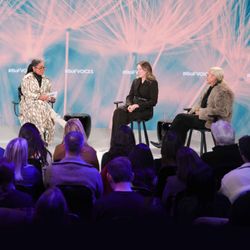
What Happens When Women Lead
16:49|Collectively, Clare Waight Keller and Maria Cornejo have over two decades of experience in the fashion industry. Waight Keller’s impressive career includes roles at Givenchy, Chloé and Gucci — and today, she serves as creative director at Uniqlo. Cornejo’s New York–based label, founded nearly three decades ago, counts Michelle Obama and Christy Turlington Burns among its most devoted fans.From deeply entrenched gender biases to the fear of returning to work after giving birth, women face a number of systemic barriers to reaching senior leadership positions in the fashion industry, insiders say. Today, some women designers have found success launching their own labels — and when they do land leadership roles at major houses, often make it a priority to create opportunities for other women, which remain few and far between.At the VOICES 10th anniversary, Waight Keller and Cornejo speak with senior correspondent Sheena Butler-Young about what it’s like to work in an industry where women are the muses and chief customers, but the top commercial and creative roles are dominated by men. Key Insights: Clare Waight Keller says that the inequalities between men and women in fashion are driven in part by the narrative that “men are often seen as the implementers of big change, and women of stability, and so with stability we’re often also cornered into a commercial sense of aesthetic.” Both Waight Keller and Cornejo push back against this notion, saying that women aren’t less creative but simply more considerate of how real women want to dress.Maria Cornejo feels that “there’s a big disconnect in fashion… from what's instagrammable and what is actual reality … all the women I know who have independent businesses… we’re making clothes that women wear.” Both designers say they have encountered inequities as women in fashion, prompting Waight Keller to intentionally assemble an all-women team at Uniqlo. “Women add so much richness into the conversation of clothing, we offer a completely different perspective which is equally powerful and equally relevant,” she says.Additional Resources:BoF VOICES 2025: Finding Connection in Turbulent TimesClare Waight Keller | BoF 500Maria Cornejo | BoF 500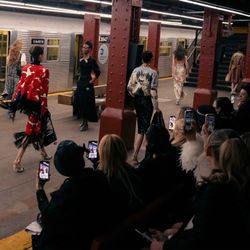
5 Big Questions About Luxury
30:46|Luxury’s most eventful year in some time is closing with a bang. From Prada’s Versace acquisition to Matthieu Blazy’s debut Chanel Métiers d’Art collection, seismic industry developments are landing on an almost daily basis.In this episode of The Debrief, senior correspondent Sheena Butler-Young and executive editor Brian Baskin are joined by BoF’s Luxury editor Robert Williams, who unpacks all of the industry’s most pertinent news, including the strategic implications of A$AP Rocky’s partnership with Chanel, the rise of the beaten up handbag, and the future of luxury in 2026.Key Insights: The luxury market’s forecast is cautiously optimistic, relying heavily on Chinese consumers and designer-led resets to revive the industry. Brands also need to grapple with justifying value after aggressive price increases in recent years. “Pricing’s certainly going to be an issue and it’s going to be a big issue in the US, which is a really key market for maintaining the brand’s top line,” Williams said.With Prada’s acquisition of Versace closing this week, it remains unclear as to whether the brand will continue with Dario Vitale’s new approach to Versace, or steer towards a more classic, glossy aesthetic. “[Versace] has gone through a pretty radical shift over the past couple of months and whether or not [Prada’s] going to want to continue with that is the biggest most urgent decision, and for them to clarify that for the market,” Williams said.Luxury dining is becoming increasingly popular across the world, but can luxury chains like Langosteria remain cool as they expand? “Fashion once upon a time was all made by your local tailor, your local couturier, and once they decided they could scale taste, that was more desirable than just having something that was more small-scale … In food it seems like it’s kind of the opposite,” Williams said.Originally inspired by Jane Birkin and Mary-Kate and Ashley Olsen, beaten up bags are everywhere in luxury fashion today. “There’s something about the fact that, no matter how much you wear out that bag and trash it, it’s still not going to break and fall apart. I think it just makes it a really cool style gesture. It shows you’re not someone who just bought into it yesterday,” Williams said.Additional Resources:Prada’s Versace Acquisition Closes, Now the Real Work BeginsHow Beat-Up Bags Became a Luxury Status SymbolBreaking Down Chanel’s A$AP Rocky Partnership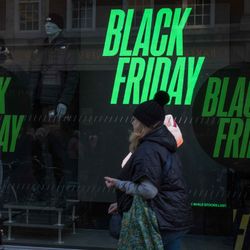
Is This the Year Discount Mania Finally Ends?
27:33|As the holiday shopping season approaches, consumer sentiment is slumping, yet spending is bifurcated – the top end keeps buying while the bottom 80 percent is more cautious. With Black Friday looming, brands are recalibrating promotions around value, desirability and hero products rather than blanket discounts. In luxury, upheaval at several department stores has created white space for rivals to woo high-spending clients through aggressive clienteling and tighter, faster vendor partnerships. In this episode of The Debrief, hosts Brian Baskin and Sheena Butler-Young speak with BoF reporters Cat Chen and Malique Morris about how brands are planning the season.Key Insights: Consumer spending hasn’t vanished, but it’s shifted toward shoppers who still feel flush. As Chen notes, “people are not really feeling rosy about the state of the economy, but the irony is that they’re still spending money.” Since Covid, “spending has been driven by the wealthier segment,” and it’s clear that “what consumers want is value… they want to get a good deal, but they don’t want to buy a cheap product.” For retailers, that means “more sophistication around price architecture” and using AI “to price products perfectly.”“Black Friday–Cyber Monday is not a fix for a mediocre year,” says Morris. Instead, winners are “prioritising desirability over discounts,” introducing “new products specifically for this time” and pushing “hero best-selling product.” The old playbook is out, and “slapping a 50% off everything discount on Instagram is not gonna cut it,” says Morris. In the “age of curation,” even deal-hunters expect editing, storytelling and reasons to stop scrolling.Morris argues that even in a discount-driven moment like Black Friday, shoppers still want offers to feel edited and intentional, and brands are responding with more curated tactics rather than blanket markdowns. “We’re in the age of curation and so even when people are expecting deals, they don’t want to feel like they’re just getting slopped,” says Morris. Tariffs and margin pressure mean many brands cannot afford a race to the bottom, pushing them to plan inventory more carefully, introduce new products specifically for this period and reserve discounts for hero items.Chen explains that this holiday season is especially high stakes for luxury multi-brand retailers because a few big players are stumbling – and everyone else is trying to capitalise. “Saks and SSENSE and Luisa Via Roma are three players that have faced pretty bad challenges this year,” she says. “They have opened up white space for their competitors on healthier financial footing to come in and basically eat their lunch and acquire their customers, acquire their sales.” The response is an aggressive push on clienteling and talent: retailers are not just targeting wealthy individuals, but also the salespeople and stylists who already manage those relationships.Additional Resources:Brands Try to Get the Tone Right for Holiday 2025 | BoF Inside Luxury Retailers’ Bare-Knuckle Fight to Win the Holidays | BoF Black Friday Beauty Goes Beyond the Discount | BoF
Can Fashion Still Meet Its Climate Promises?
30:26|As COP30 gets underway in Belém, a port city on the edge of the Brazilian rainforest, the mood is sober. A decade after the Paris Agreement was adopted internationally to limit global warming, many of the world’s largest fashion companies have fallen short on emissions cuts — and some are moving in the wrong direction, emitting pollutants at an even higher rate than in previous years.In this episode of The Debrief, senior correspondent Sheena Butler-Young and executive editor Brian Baskin are joined by BoF reporters, Sarah Kent and Shayeza Walid, to examine why progress has stalled, how fast-fashion growth is reshaping the landscape, and what practical steps — from decarbonising supply chains to adapting factories to extreme heat — are needed next. Key Insights: Kent says, “I would not say any brand has a credible pathway right now to meet their targets for 2030,” “Even companies that have shown that they’re able to reduce their emissions to date, driving down their carbon footprint over the next five years is going to be harder, more complex and more costly… and really no one company can do that alone.”Kent highlights the industry’s deep structural bind: “The fundamental conflict at the heart of the fashion industry’s climate commitments is that you’ve got a business built on extracting stuff and producing stuff and selling stuff. The more stuff they sell, the better the business does, but the worse the environmental impact is,” “Profitability and sales growth are fundamentally at odds with the environmental commitments companies have made.”Short-term thinking still in the boardroom locks in higher climate impacts, adaptation costs and supply-chain risk. As Kent puts it, “On climate, if you don’t act, you don’t have to make these big investments, and you can keep growing your business and things will trundle along for some time. But the longer you wait to act, the worse the climate impacts you’re going to have to deal with are going to be, and the higher the cost of mitigating them, adapting to them, and trying to continue this business in a climate-constrained world.”Voluntary commitments aren’t enough at fast fashion’s scale. Walid points to Shein: “Shein’s case is very instructive. There’s limits to voluntary commitments, which is what the majority of these brands have made.” She continues, “When the business model is built on speed and volume… it just shows that voluntary commitments are maybe not enough for a fashion brand – especially a brand as big as Shein – to actually tangibly reduce its emissions when its entire business case doesn’t stand for that.”Climate impacts are now serious human and corporate risks. “It’s not just a corporate issue anymore,” says Walid. “People who have the visuals recognise the reality of what’s happening in these factories and the people who are making clothes at the end of the day.” Kent adds: “People who are suffering from heat stress are not as productive… floods are disruptive to production, to logistics, to supply chains. Just because we have not yet seen a major disruption to the apparel supply chain from these climate crises yet is more luck than anything else.”Additional Resources:Can Fashion Still Meet Its Climate Promises? | BoF The Frayed Edge: Is Fashion Quiet Quitting on Climate? | BoF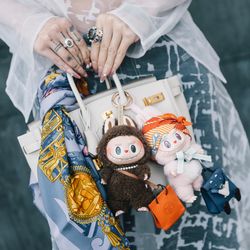
Why Is Everyone Obsessed With Accessories?
22:06|Colourful charms, Labubu-laden handbags and a ring on every finger – accessories sales are booming. A surge of necklace stacks, playful rings and quirky charms is being driven by Gen Z’s push for personal style, using add-ons to customise minimalist wardrobes on a budget. With apparel prices up, accessories act as “little luxuries” and entry points into brands. Retail is responding, with buyers widening small-leather-goods assortments and e-commerce shoots now styling bags with charms to encourage add-on purchases. BoF reporter Diana Pearl joins The Debrief to unpack what’s fuelling the accessory pile-on, how labels are capitalising on it, and how far the trend can go before the cycle turns. Key Insights: According to Pearl, Gen Z is reaching for accessories as a way to personalise their minimalist wardrobes. “Gen Z, which is really looking to define their sense of personal style, is leaning on accessories to do so, especially because minimalism in clothing is still very popular… but they also wanna have a little more fun and accessories are a way to do that,” she says. Regarding the longevity of this trend, Pearl adds, “I think we'll see a consumer that is primed to think of accessories as a more important part of their wardrobe – not just like a finishing touch, but a core element of it.”The Labubu craze captures the mood of the accessories trend – playful, collective and endlessly customisable. “There’s so many different Labubus. There’s a bit of that thrill of the hunt to try to find the right one. You can add it to an Hermès bag or a $100 leather tote from J. Crew,” says Pearl. For many shoppers, she says, “it really speaks to that desire for fun and adding a personal touch. People want things that make them feel good.”While luxury houses profit from entry-level add-ons, Pearl sees independent makers riding the wave. “I think it probably is helping luxury brands but I think even more than that, it’s helping small brands that really can make these cute accessories that feel distinct and different from what everyone else has, because I think a huge part of this is that quest for personal style, wanting something unique,” says Pearl. Pearl frames the moment as a behavioural shift rather than a transient trend. She argues, “trends go away, but they never fully go away. I think every trend leaves a lasting impact or impression on us. Maybe Labubus, toe rings, and bag charms won’t be quite as popular, but maybe they’ll evolve.” Crucially, “I think that this has unlocked something in people… it will have a lasting after effects of this trend, even if not everybody is wearing five necklaces at once in a year from now.”Additional Resources:How Far Can Fashion’s Accessory Obsession Go? | BoF Why Jewellery Feels Like a Better Deal Than a Handbag | BoFLuxury’s Untapped Opportunity in Men’s Jewellery | BoF